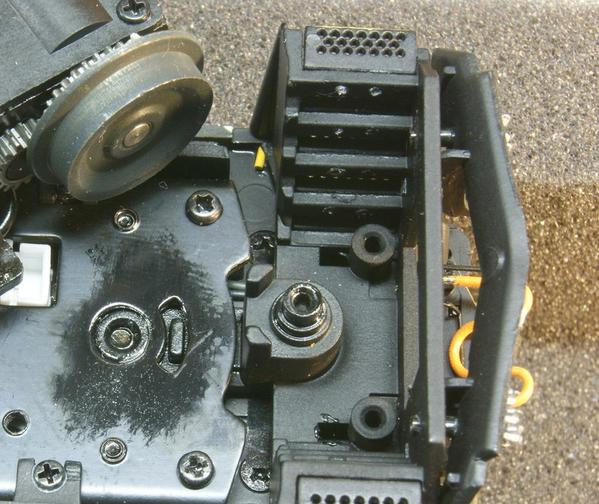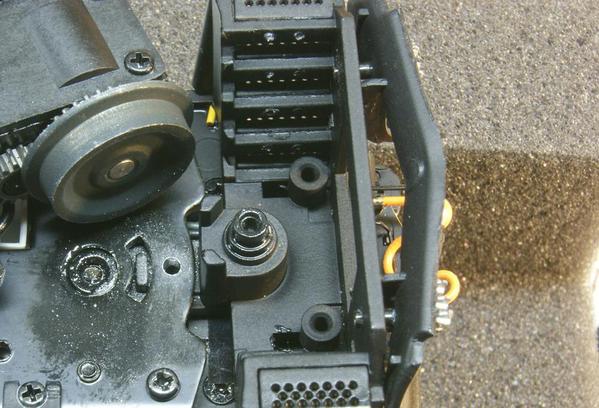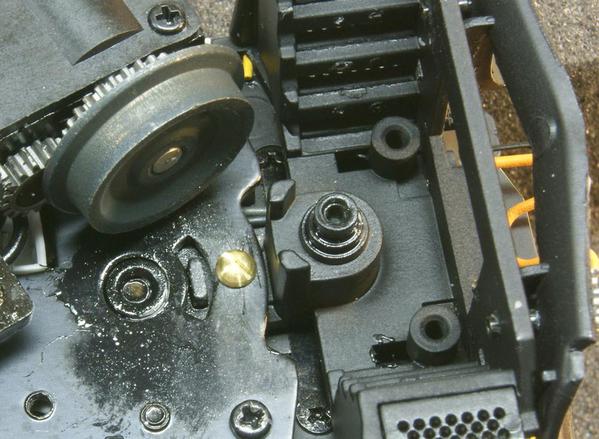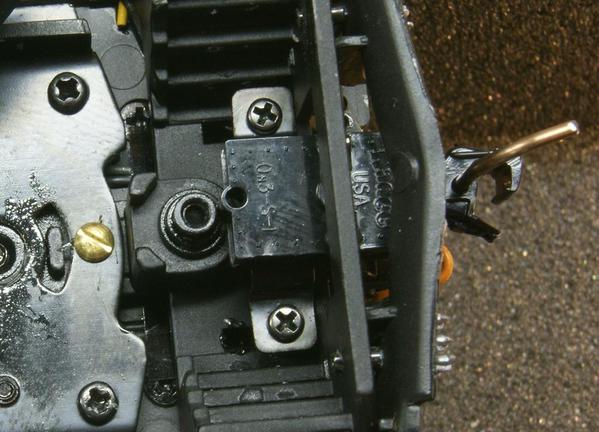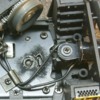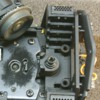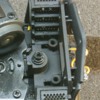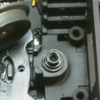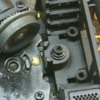I've started the scalification process of my American Flyer ES44.
I say anchoring the pilot because upon closer examination, I see no way to physically mount the pilots to the ES44 (ala the SD70) without taking the model almost completely apart. That's something I don't particularly feel like doing.
So after kissing the warranty goodby and without further adieu:
Here's how things look up close and personal. I've removed the sideframes because I will be installing scale wheel sets, but also to give more "fightin' room."
Once the electro-coupler is removed it's clear the pivot arm is secured from the top of the frame and moves between the frame and body. Without tearing the model further apart, there's still not a lot of room for my fat fingers.
The bosses at the front are for mounting the coupler bracket. I initially thought they were for mounting the pilot, but, wrongo...
I decided that I could anchor the pivot arm with a single 1-72 screw. First, carefully and slowly drill a with #53 drill. Drill though the frame and pivot arm while holding the pilot in line with the body.
The next step is to drill a #48 clearance hole through the frame only. The pivot arm can then be tapped for 1-72:
Lastly, install the 1-72x1/4" screw. It's not tightened down fully because without some kind of spacer between the pivot and the frame, it forces the pilot down a little bit. I secured the screw with a small dab of silicone sealant. The pilot will still wobble slightly, but for all purposes, it doesn't swing anymore. Plus, it's easily reversible if needed.
Finally all that's left is to install the coupler on the bracket and mount it to the pilot.
In another "how do you do" to the Scale crowd from the gang at Circle L, the screws supplied to attach the coupler box to the bracket are too short. They are as long as the box is high. I used the short self-tapping screws supplied by Kadee. Work slowly and back the screws off every little bit so they don't break and everything will be fine.
The supplied screws to mount the bracket to the pilot are OK. My hands started to tense up, so I'm taking a break from the festivities.
I still have to change out the wheels and do the rear pilot, probably finish up sometime today. One thing is for certain: This will be my first and last ES44 pilot rework.
Rusty





